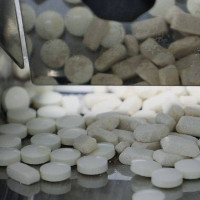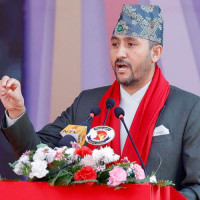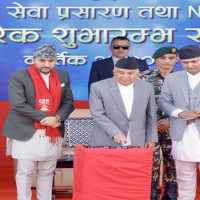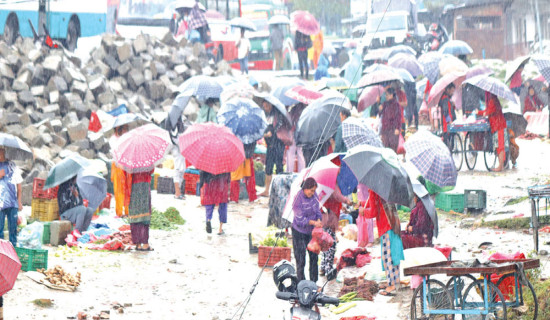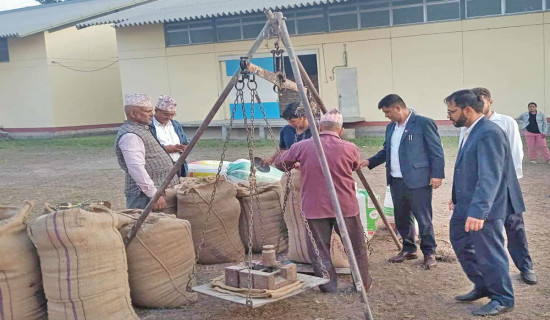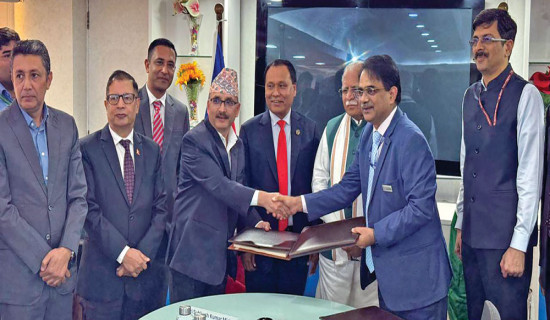- Sunday, 9 November 2025
halt of Longstanding subsidy worries sugarcane farmers
Kathmandu, June 20: Thousands of sugarcane farmers across Nepal are shocked by abrupt halt of the subsidy provided to sugarcane farmers for more than 15 years.
The decision of the government to discontinue the subsidy has sparked widespread concern, particularly among farmers in the Tarai region who heavily rely on sugarcane as their livelihood.
The government started providing subsidy to sugarcane farmers from 2009 to promote sugarcane cultivation. After facing problem in subsidy distribution, the government has been providing subsidies to farmers based on production since 2018 by formulating a procedure.
Kapil Muni Mainali, president of Federation of Sugarcane Producers' Association, claimed that the sugarcane farmers were disappointed by the government's decision to stop the subsidy to them.
Initially, subsidies were provided through industrialists, based on sales. The VAT amount was also refunded to the industrialists, who were then responsible for distributing the subsidies to the farmers, he said.
Farmers from key sugarcane-producing districts—including Morang, Sunsari, Bara, Parsa, Dhanusha, Siraha, Mahottari, Sarlahi, Nawalparasi, Kailali, and Kanchanpur were in Kathmandu in a last-ditch effort to persuade the government to reverse its decision.
However, their meetings with Minister for Agriculture and Livestock Development Ramnath Adhikari, Finance Minister Bishnu Prasad Paudel, and Minister for Industry, Commerce and Supplies Damodar Bhandari ended in disappointment, said Mainali.
The government subsidy had been a crucial incentive, helping cover the high costs of production including seeds, fertilisers, irrigation, and labour, he said.
In the current fiscal year 2024/25, around Rs 2.25 billion has been allocated to encourage farmers to promote sugarcane farming.
However, as there is no mention of this in the upcoming fiscal year's budget, not only the farmers are worried, there is also a risk of abandoning sugarcane farming, he said.
Dr. Januka Pandit, spokesperson and joint secretary for the Ministry of Agriculture and Livestock Development, admitted that the government has stopped providing subsidies to sugarcane farmers.
She said that the government takes policy based on the analysis of any crop, and the subsidy currently being given to sugarcane may have been discontinued.
The government had already paid around Rs. 1.44 billion subsidy to farmer for sugarcane that crushed by sugar mills last year.
Approximately 64,000 farmers who sold sugarcane to sugar mills were receiving subsidies.
Devendra Kumar Yadav, a sugarcane farmer of Godaita Municipality, said that the government has been providing a subsidy of Rs. 70 per quintal, which could be the profit from sugarcane production, and as the production cost would increase after deducting the subsidy amount, many farmers could decide not to cultivate sugarcane at all.
The government has set the minimum support price of sugarcane at Rs. 655 per quintal including subsidy for the current fiscal year 2024/25. Of this, Rs. 70 is the government subsidy and Rs. 585 is the amount given to the farmers by the industrialists per quintal.
President Mainali said that during the meeting with the ministers, he requested the ministers to provide a subsidy for 24 million quintals of sugarcane that was crushed this year, but they were told that the subsidy could not be provided.
Farmers are yet to receive around Rs. 1.6 billion subsidy from the government based on 24 million quintals of sugarcane this year.
“We are devastated. Without the subsidy, farmers cannot afford to grow sugarcane on the same scale. Many of us are already thinking of switching to other crops or leaving farming altogether," said Yadav, who is also Mayor of Godaita Municipality.
Sugar mills to be affected
Yadav warned that the decision could have far-reaching consequences, including the closure of sugar mills.
About 11 sugar factories are directly dependent on sugarcane production. If farmers stop growing sugarcane, these factories will be shut down, he said.
"The government has money to invest in unproductive sectors, but it has no money to invest in sectors where thousands of farmers are involved and which have contributed significantly to reducing imports by producing sugar. We do not know what compelled the government to cut subsidy," Mayor Yadav questioned.
He said that he was cultivating sugarcane on 12 bighas of land and produced about 5,100 quintals of
sugarcane annually.
He accused the government of moving in the wrong direction by cutting subsidies instead of investing and promoting sugarcane cultivation and making the country self-reliant in sugar.
Area of cultivation shrinking
Farmers who depend solely on sugarcane have recently started growing other crops such as fruits, rice, corn, wheat, lentils, and mustard.
According to the statistics of the Ministry of Agriculture and Livestock Development (MoALD), the area of land under sugarcane cultivation has been limited to 62,567 hectares in 2021/22 and produced 3.1 million tonnes of sugarcane. The sugarcane cultivation was done in around 78,609 hectares of land in 2017/18 that yielded 3.6 million tonnes of sugarcane.
Joint Secretary Pandit claimed that stopping the subsidy will not lead to a significant reduction in sugarcane production as seed development, irrigation, and other facilities including technology are still ongoing.
Yadav, however, said that area of sugarcane cultivation will decrease significantly, resulting in a fall in the domestic production of sugar and rise in its import. According to the statistics of the Department of Customs, the country imported sugar worth Rs. 2.55 billion during the first 10 months of the current fiscal year.
Around 43,400 tonnes of sugar was imported during the review period. The government has collected revenue of Rs. 788 million from the import of sugar during the review period. Sugar is being imported to Nepal from China, India, Thailand, Namibia, Bulgaria, Indonesia, Thailand, United States of America and Turkey. Of the total import, around 70 per cent is being imported from India alone.




